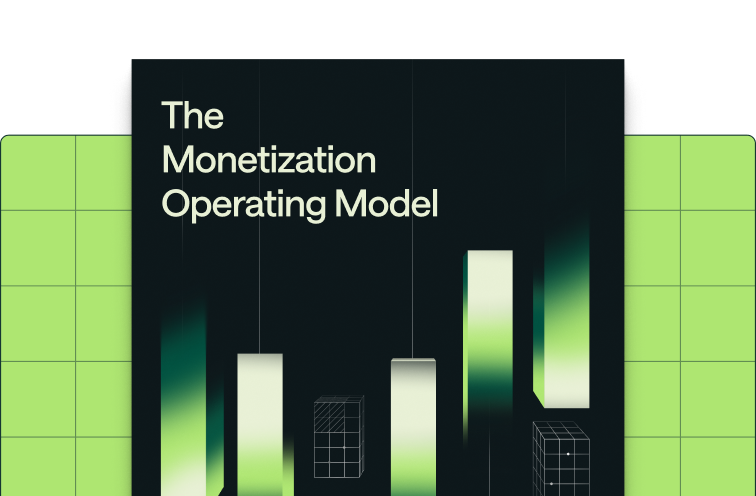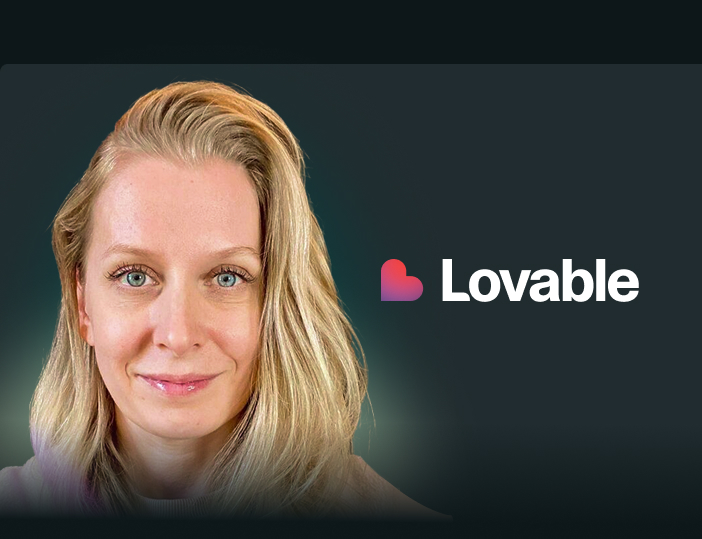Share
Picture your next Series B board meeting. The agenda reaches "pricing." And here’s what happens:
- Product explains the new usage tiers that will be rolled out
- Finance presents a forecast that assumes last quarter's pricing
- Sales asks for discount guardrails and how new pricing will impact deals
- Engineering reminds everyone that any change touches multiple systems, from metering to invoicing.
The board listens to leaders speaking about monetization from different angles and asks: "Who owns monetization?"
That awkward pause signals a deeper problem. No one owns pricing.
Right now, pricing sprawls across functions:
- Product defines how value is delivered and the unit of measure (tokens, agents, workflows, outcomes)
- Engineering enables instrumentation, metering, and rate cards so activity ties directly to billing.
- Finance governs pricing and translates it into forecasts, margin models, and revenue plans.
- GTM communicates pricing clearly, drives adoption, and identifies opportunities for iteration.
When ownership fragments, decisions stall, experiments die in committee, and revenue bleeds out through gaps no one feels accountable to fix.
Monetization execution velocity — how quickly you define value, package it, push changes live, and measure impact — can become your competitive advantage.
Right now, RevOps or Monetization Ops tries to be the connective tissue, handling pricing systems, rollout processes, and experimentation infrastructure. But they lack authority over strategy and get pulled into reactive coordination rather than proactive value creation.
This fragmentation demands someone who owns the entire monetization system end-to-end. We’re calling that someone the Chief Value Officer (CVO).
Until someone steps into that seat, every pricing discussion ends where your board meeting began: with silence where decisive answers should be.
The monetization ownership crisis
Every team depends on pricing data, but no one owns the full equation. Companies are losing revenue because no single person owns the increasingly complex monetization process across departments.
Why is this only getting harder for companies to manage? We're now in the Value Era.
{{widget-monetization-whitepaper}}Software delivers and captures value differently.
During the Software Era, pricing was straightforward — you paid for access. Companies charged per user or per month, and a product manager could adjust package features annually without touching a line of code. Departments operated in comfortable silos with minimal coordination.
The Value Era changed everything.
AI is accelerating this shift, making value delivery more dynamic and outcome-driven than ever before.
Now, pricing directly reflects how customers actually use your product. Instead of seats, you measure API calls, GPU minutes, or savings delivered. Usage fluctuates daily, creating dynamic consumption patterns that ripple across the organization.
Product teams must determine feature gating based on usage levels. Finance scrambles to forecast revenue from unpredictable consumption. Engineering builds complex metering logic to track it all. And sales reps explain increasingly sophisticated models to confused prospects.
What was once a simple pricing decision now demands cross-functional orchestration.
All that said, companies that migrate from flat-rate to hybrid usage models often see substantial revenue and satisfaction increases. Yet most never capture these gains because:
- Experiments die in cross-functional gridlock
- Launches slip indefinitely
- Price tests never run
- Unresolved overages sit in log files instead of invoices
Modern monetization is a system, and systems without clear owners break under pressure.
Enter the Chief Value Officer
The CVO is an emerging concept proposed to address monetization bottlenecks by centralizing aspects of pricing, packaging, delivery, and measurement. This emerging role addresses the critical gap by connecting strategy to execution across departments.
Think of it this way: the CVO conducts a complex revenue orchestra.
Product supplies the instruments, Finance funds the performance, GTM fills the seats, and Engineering manages the stage lights.
Without a conductor, every section can play the right notes and still produce noise. With a CVO, the music is synchronized, adaptive, and profitable — no matter how often the set list changes.
This cross-functional positioning keeps incentives consistent: customers pay for value, teams get credit for delivering it, and revenue flows without manual heroics.
The CVO has four main responsibilities:
- Value management process ownership: Standardize how the company creates, quantifies, documents, and captures value, so every launch or price change follows the same playbook
- Customer value advocacy: Champion outcome conversations over feature checklists; train teams to show ROI in dollars, not adjectives
- Pricing and value capture: Design models that map directly to willingness-to-pay, then adjust them as usage data rolls in
- Enablement and evangelism: Convert value theory into daily habits, tools, and dashboards the whole org actually uses
This differs from roles you already fund in crucial ways.
For example, a product manager obsesses over feature adoption, while a CVO obsesses over the monetization outcomes of those features.
Finance and RevOps handle billing execution, while the CVO sets the value capture strategy that those systems implement.
External pricing consultants leave slide decks, while the CVO embeds with your teams and owns P&L impact.
In other words, the CVO:
- Focuses on satisfaction post-sale
- Connects that satisfaction to revenue
- Controls cash
That said, the title matters less than having clear ownership of the monetization system.
Meaning, at younger organizations, you may not need a dedicated CVO. The monetization system owner could be someone from Product or RevOps stepping into this role and owning the outcome.
As long as they ensure the company earns more by aligning price with value delivered.
Why now is the inflection point
Monetization complexity has crossed a threshold where pricing can't survive as a side project. Once usage-based components, AI add-ons, or outcome models enter the mix, decisions multiply, data fragments, and execution slows.
Companies need someone who wakes up every day owning value creation and capture end-to-end.
The complexity threshold has arrived
Hybrid pricing used to mean a base subscription with simple usage add-ons and an annual reconciliation of actual usage versus contracted amounts.
Today, it means base subscriptions, usage-based charges, AI add-ons, and outcome guarantees all potentially living in the same contract.
These layered models are becoming the standard. When each pricing permutation touches billing logic, revenue recognition assumptions, and sales compensation, fragmentation costs real money through delayed launches and manual workarounds.
Market forces demand ownership
Boards are no longer impressed by headline growth if revenue swings 20% month to month.
They want forecasting accuracy and clear expansion levers — both impossible without a single owner connecting usage data to financial models.
In addition to that, customers are pushing for transparent, value-aligned pricing. And increasingly choose vendors who prove ROI and charge fairly for outcomes.
Engineering teams feel the squeeze as every new pricing idea becomes another sprint ticket, blocking core roadmap work until billing changes ship. Revenue operations teams spend weeks building manual reporting bridges between systems that should connect automatically.
Early movers capture competitive advantage
Companies that institutionalize value ownership now can run faster experiments, refine value metrics, and iterate packaging while competitors debate who should update the price sheet.
Firms able to "treat pricing like product" are well positioned to capture outsized expansion revenue as their data and processes mature — advantages that compound over time.
The window exists because most companies haven't recognized this as an organizational design problem. They're still treating monetization as a coordination challenge rather than an ownership gap.
Inaction Scatters Critical Responsibilities
The gap exists, even if you don’t have a CVO to fill it. What should be the CVO’s responsibilities just get scattered across product managers, finance analysts, and overburdened engineers, each optimizing for their own metrics.
The result: slower launches, inconsistent messaging, and mounting revenue leakage.
The CVO is the logical consolidation of responsibilities already critical to growth. Once complexity breaches this threshold, appointing a monetization owner stops being a strategic choice and starts being an operational necessity.
The sooner you act, the sooner pricing shifts from constraint to growth lever.
Building the role
To start building the CVO role, you need to build a value management system around the person.
Here are four core principles for building an effective value management system:
- Centralized strategy: One owner for value metrics and pricing logic
- Coordinated execution: Product, GTM, and finance implement their pieces with clear expectations of roles and responsibilities
- Shared scoreboard: Net revenue retention (NRR), time-to-value, and expansion revenue appear on the same dashboard for every team
- Regular cadence: Monthly pricing reviews make experimentation routine rather than ad-hoc
The exact shape of that system changes with company maturity, but the underlying design principles stay the same: centralized ownership of value, coordinated execution, and instrumentation that makes every pricing change measurable.
At early stage, typically Series A or sub-$10 million ARR, one operator handles the entire scope.
This person usually comes from Product or RevOps because they already connect customer insight with financial impact.
Their real strength should be systems thinking: mapping the value management lifecycle, quantifying willingness-to-pay, and turning insights into rapid pricing experiments.
Teams can triple experiment velocity when that operator gets explicit authority over pricing decisions and a mandate to prove impact within two quarters.
As companies scale, the role evolves, but ownership remains critical.
The CVO coordinates across departments where Product defines measurable value units, Finance forecasts using real-world usage data, and GTM sells outcomes rather than features.
This team embeds across departments, meaning the analyst works with Finance during forecast season while the Value Engineer joins enterprise deals.
Success shifts from shipping new pricing models to measuring the impact those pricing changes have on the bottom line.
When those metrics improve, Finance sees it immediately.
The final piece is infrastructure.
When product usage data flows directly into billing and CRM systems, pricing strategy translates into execution. A value-centric culture only works when data flows freely across systems.
Give your CVO decision-making authority, not just a seat at the table, and the role scales with your business rather than becoming another executive silo.
The ROI of monetization ownership
When a Chief Value Officer stitches together the full value-management loop — creation, quantification, documentation, and capture — revenue stops leaking through the gaps that form when pricing is everyone's job and no one's mandate.
The revenue impact hits your top line first.
Clear ownership means each feature ships with a value metric and a pricing plan, so dollars actually follow adoption. Teams often discover significant revenue opportunities by identifying under-monetized capabilities that customers already value but aren't properly priced.
Expansion becomes easier, too. Sales enters renewal calls armed with ROI calculators rather than discount requests, lifting NRR and defending price increases without customer churn.
Speed follows revenue.
Because the CVO owns the pricing playbook, experiments run like product sprints instead of quarter-long committee meetings. A pricing pilot that would otherwise take months can be live in weeks when pricing, billing, and finance speak the same language.
Faster iteration compounds — every failed idea killed quickly is engineering time redirected to what customers actually value.
Operational friction drops at the same pace.
Finance gains real-time visibility into usage streams, turning end-of-quarter surprises into mid-month course corrections. Engineering stops hard-coding prices because billing logic now lives in a system the CVO governs. GTM teams finally tell a single, confident pricing story, and customer success can prove business outcomes rather than rely on anecdotes.
The result is a company that executes like one team instead of five loosely coupled functions.
Strategically, the CVO future-proofs your position.
Markets reward businesses that align price with delivered value. By institutionalizing value conversations, you create a moat that's harder to copy than any single feature and far cheaper than another growth experiment.
Investors notice when they see a role chartered to drive both long-term value creation and near-term fiscal discipline.
Monetization can become your growth engine. When pricing reflects real product value and a single leader is accountable for every dollar that moves, revenue grows, churn shrinks, and the entire organization runs on aligned, measurable momentum.
Build your monetization command center, led by a CVO
Monetization complexity has crossed the threshold where fragmented ownership breaks revenue systems.
The breaking point appears when pricing experiments bottleneck product releases or forecasting fails because billing infrastructure can't support business model evolution.
A Chief Value Officer (CVO) solves the problem by owning the full value lifecycle — definition, measurement, and capture — turning pricing from a quarterly debate into a repeatable growth system based on customer outcomes.
This leader connects the dots between product telemetry, finance models, GTM messaging, and customer success metrics when six departments would otherwise influence value capture without unified ownership.
Ask yourself, “Who is the person responsible for value definition, pricing architecture, billing integration, and measurement end-to-end at your company?”
You need clear ownership of value definition, pricing architecture, billing integration, and measurement end-to-end. Without it, revenue leakage becomes inevitable.
Want to turn monetization into a growth lever? Sign up for early access to the Monetization Operating Model to learn all about the Value Era and how you can take advantage of the current monetization landscape.
{{widget-monetization-whitepaper}}.jpg)










.png)